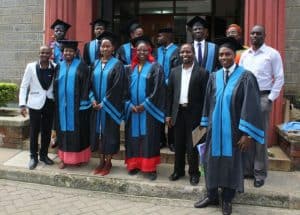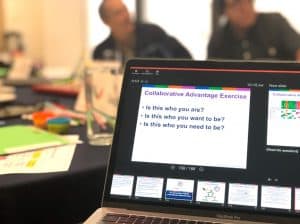As we fulfill the role of 방향 설정자 as leaders, we use a Strategic Plan. The process of strategic planning in closely linked to the 포지션 포커스(Position Focus) (PF) conversations we have with our team members individually and the People Meetings we have to determine how we prepare our people for future leadership roles needed on our plan.
Roger Osbaldiston has done a great job explaining how planning, Key Development Assignments, and PF conversations work together in the context of student ministry. No matter what kind of ministry you do or at which level, however, the priniciples apply. Enjoy the video and transcript below.
“Hi, Roger Osbaldiston here from the Global Student Led Movements team. In SLM we talk a lot about our Three Everys. Seeing the gospel available for every student, seeing a movement on every campus, and raising up leaders in every nation. And as you know, we often talk about our hockey stick goal–to see a spiritual movement on 50% of the world’s campuses by 2020.
One of the most important things that can help us reach these goals and accomplish our objectives is to have a good strategic plan and also to have good Personal Development Plans for our team members, leaders, and volunteers. Oftentimes, when we think about strategic plans, we start at point A and hope that we’re going to get to point B. A lot of leadership is how we take a group or team from A to B.
Sometimes we think that is going to be a straight line. But the reality often is that when we begin our plans we encounter obstacles and challenges along the way that can make us feel like we’re going in circles. So a good strategic plan is one that has critical path steps that help us to make course corrections along the way. I want to talk about what it means to have a strategic plan for our SLM ministries in each nation.
Back in 2001, when I was the national campus leader for New Zealand, we were on four campuses and had about 22 staff. We had great dreams of expanding to new campuses and growing as a ministry, so we developed a strategic plan together. It was a process of engaging our leadership team and our local campus ministry teams in what it would mean to have a national strategic plan.
I really believe its important for every national campus ministry to have a national strategic plan. We put together a plan, and I’ve brought it with me. It was something that was super helpful for us. We plotted out what our current reality was, we thought about our mission and goals, and we planned out the steps that would take us where we needed to go.
What was encouraging was that over the next five years we accomplished each of those objectives, and we grew from 22 staff to 65 staff and we expanded from four campuses to seven campuses across the country. I don’t believe we would have achieved that unless we had a strategic plan to work from.
- So I believe the first and most important step is developing our strategic plan. It’s a consultative process of seeking the Lord and bringing our team together to come up with a plan and write it out.
- The second part is then using that plan. One of the thing we did when we developed the plan in New Zealand was that when we would meet together as a team, we made each of our agenda points the critical path step points of our plan. We had seven critical path steps on our plan and those became our agenda. We would work through each of those pieces making adjustments as we went. In that way, we were able to make the strategic plan rather flexible.
- The third thing I want to add is the importance of linking the Personal Development Plans of our staff and teams with our strategic plan. I was encouraged this year while visiting with our East Asia Opportunities leadership. They showed me their strategic plan, and we walked through it together. Then they showed how parts of their strategic plan could be connected with the personal plans of their team members. I thought it was genius.
We are all encouraged to have a plan (Position Focus) which includes Critical Mission Objectives (CMO) and Key Development Assignments (KDA). When you think about your strategic plan, think about components of that which can be involved in our personal development plans.
To recap: we must develop [strategic] plans, work them into our agendas, and link them to our [personal development] plans. I think as we do that we’re going to continue to move towards our goals and objectives together.
Thank you so much for all you’re doing as we seek to reach the students around the world. I’ll be praying for you as you develop your own strategic plans.”
__________________________________________
For more information about strategic planning, please see the Direction Setter session in the Leadership Framework page. To learn more about Position Focus Conversations that include PDPs and KDAs, please check out 간사 개발 주기 실행하기(SDC) from the Team Leader Training page.










“How Strategic and Personal Plans Work Together”의 2개의 댓글
Thanks Terry and Roger for these thoughts. Linking personal plans (CMOs) to the strategic plan really helps team members see their part of the team’s job. The conversations evolve around strategic, missions goals and personal growth in that environment.
Thanks for reading and commenting, Steve!